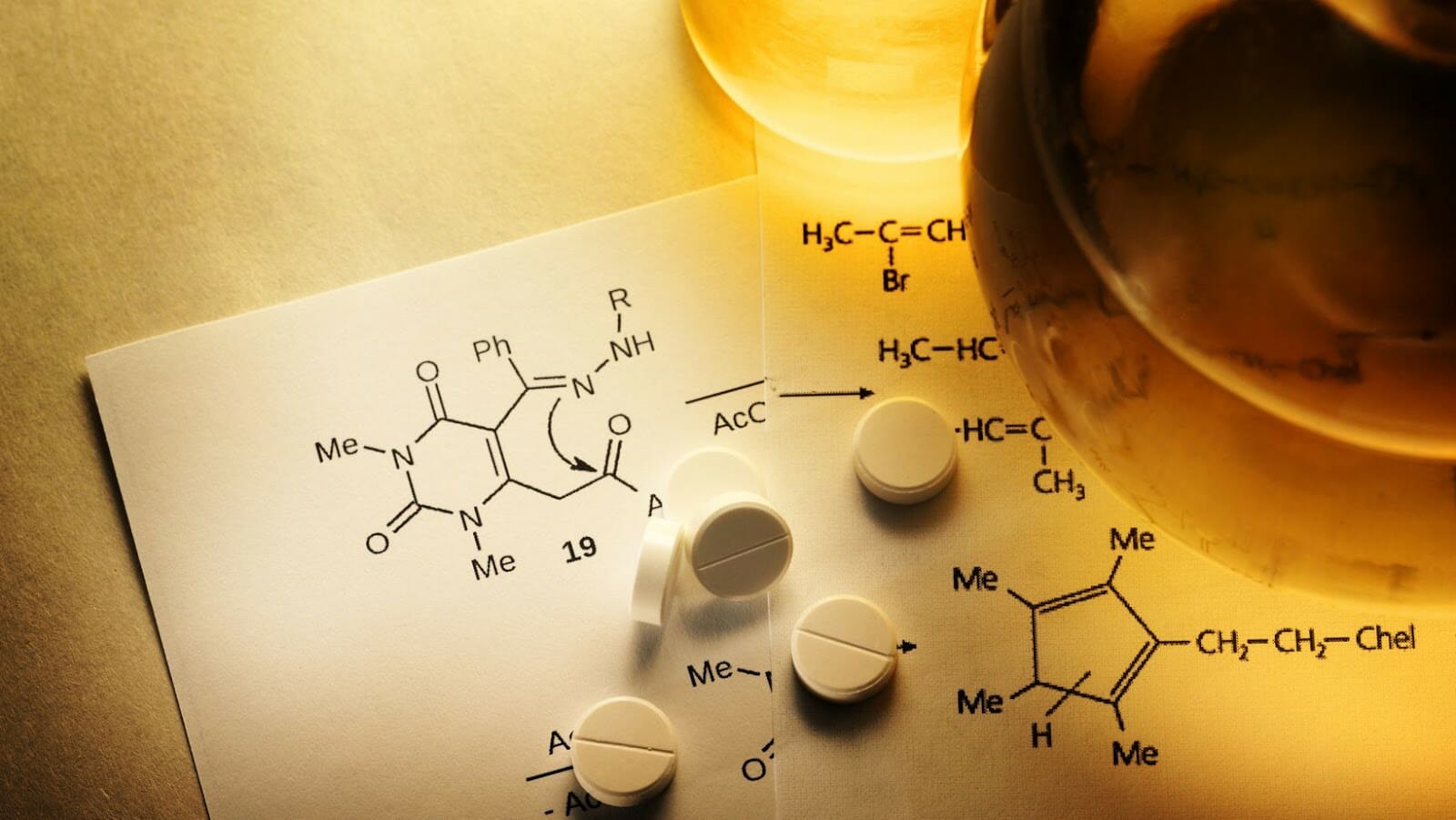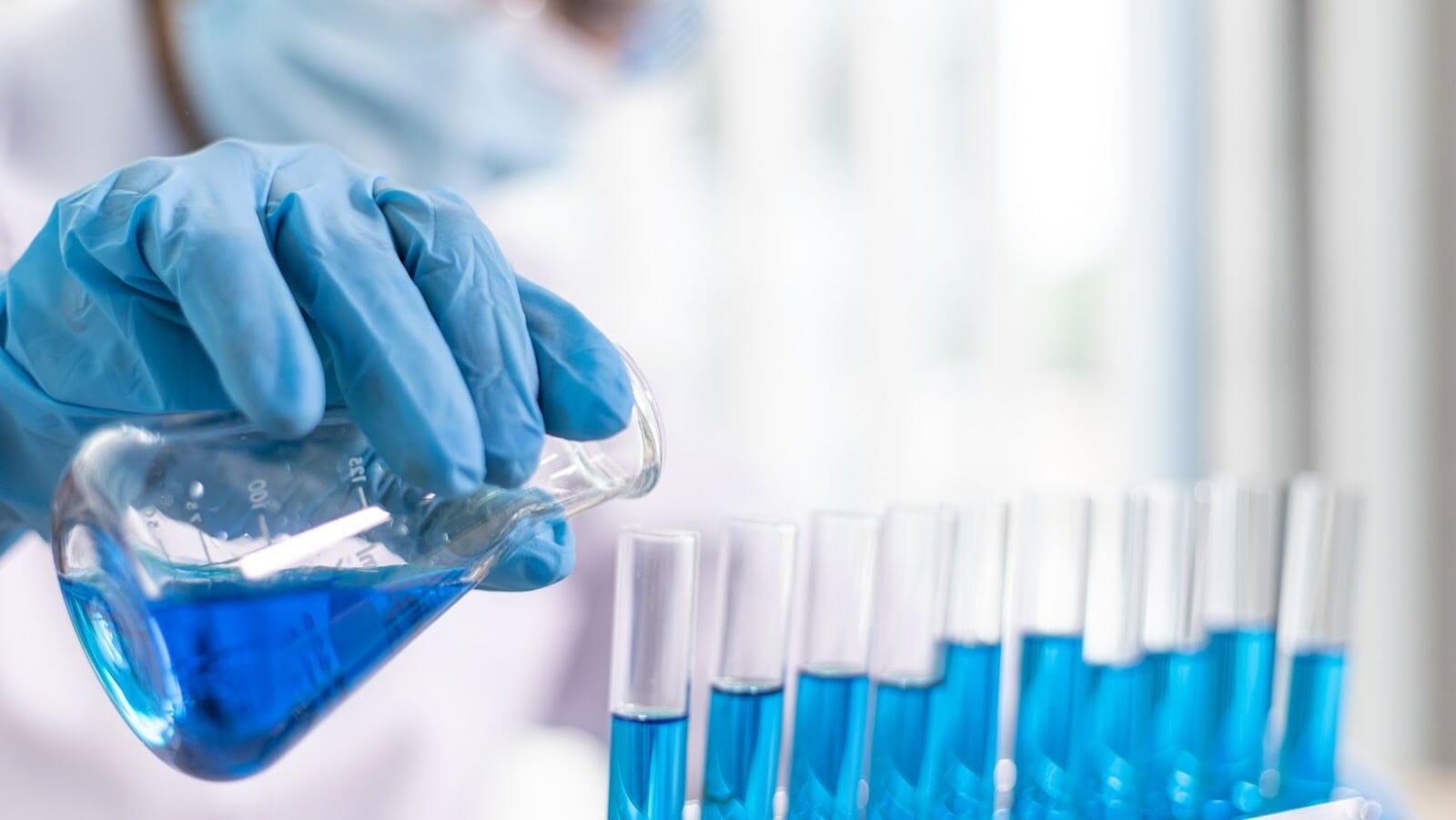Several chemistry solvents are commonly used in labs, each with its unique properties and best suited for specific applications. Here are some basic chemistry solvents anyone should know about:
Water
Most commonly used solvent in the lab and is best suited for polar compounds. It is also relatively safe, inexpensive, and readily available.
Ethanol
Versatile solvent best suited for organic compounds, including fats, oils, and waxes. It is also flammable and potentially hazardous when not handled correctly.
Acetone
Highly versatile, highly volatile solvent commonly used in cleaning, degreasing, and its ability to dissolve a wide range of organic compounds. However, it is highly flammable and toxic when ingested or inhaled.
Chloroform
Colorless, sweet-smelling solvent that is highly effective at dissolving a wide range of organic compounds. However, it is highly toxic and can cause serious health problems when ingested or inhaled.
Hexane
One of the most commonly used solvents in the lab and is highly effective at dissolving non-polar compounds. Unfortunately, it is also highly flammable and toxic when ingested or inhaled.
It is important to always wear appropriate safety gear, follow the manufacturer’s instructions, and dispose of solvents safely.
Introduction to Solvents in Chemistry
Solvents are an important chemistry part, acting as a reaction medium and holding solutions together. However, different solvents are used for different purposes, and choices must be made based on the properties of each solvent.
This article will discuss some basic chemistry solvents that everyone should be familiar with.
Definition of Solvents in Chemistry
In chemistry, solvents are substances used to dissolve, dilute or extract other substances without altering their chemical structure. Organic solvents are the most common type of solvents used in chemistry.
Here is a list of some basic chemistry solvents that anyone should know about:
SolventUse
Acetone
A common solvent used to dissolve organic compounds and as a cleaning agent.
Ethanol
Used as a solvent for DNA, RNA and proteins in laboratories and as a fuel for alcohol burners.
Diethyl ether
A colorless liquid used as a solvent for organic compounds, and in laboratories as an anesthetic in the past.
DMSO is a powerful solvent used to dissolve a wide range of organic compounds in powder or crystals.
Chloroform
A heavy, colorless, sweet-smelling liquid used as a solvent for oils, fats, and resins.
Knowing about chemical solvents is crucial as it helps choose the right solvent for the chemical reaction.
Importance of Solvents in Chemistry
Solvents play an essential role in chemistry, serving as a medium for chemical reactions and aiding in the purification and extraction of compounds.
Here are some basic chemistry solvents anyone should know about:
Water This is the most commonly used solvent in chemistry, due to its availability and ability to dissolve a wide range of compounds.
Ethanol
Ethanol is a polar solvent commonly used for extraction and purification processes. It is also used as a fuel, solvent in cosmetics and pharmaceutical products, and in producing alcoholic beverages.
Acetone
is a non-polar solvent used in many industrial and laboratory processes, from paint thinner and nail polish remover to chemical synthesis and cleaning agents.
Diethyl ether is a highly volatile and flammable solvent used as an anesthetic and in organic synthesis, due to its ability to dissolve a wide range of organic compounds.
Solvents play a crucial role in many chemical processes, and understanding their properties and applications is essential for a successful chemical reaction.
Classification of Solvents
Solvents are chemicals used in a wide range of industrial and scientific applications. They are classified based on their polarity, which affects their solubility and chemical reactivity.
Polar solvents dissolve polar compounds, such as salts and alcohols, whereas nonpolar solvents dissolve nonpolar compounds, such as oils and greases.
Here are some basic chemistry solvents anyone should know about:
SolventDescription
Water The most common polar solvent, is essential for many biological and chemical reactions.
Acetone
A common solvent for organic compounds due to its low boiling point and polarity.
Ethanol
The primary ingredient in alcoholic beverages, ethanol is also used as a fuel and a solvent.
Hexane
A nonpolar solvent used in the extraction of vegetable oils and pharmaceuticals.
Chloroform
A nonpolar solvent once used as an anesthetic and as a solvent for fats, waxes, and oils.
Always exercise caution and wear proper protective gear when handling solvents.

Polar Solvents
Polar solvents are a type of solvent where molecules are charged and interact strongly with other molecules due to the electrical forces of attraction between them. Most polar solvents have a wide variety of applications in organic chemistry, particularly the ability to dissolve polar substances, such as salts, sugars, and proteins.
In this article, we’ll look at common polar solvents and their uses in chemistry.
Definition of Polar Solvents
Polar solvents are solvents that are composed of polar molecules. A polar molecule has a positively charged end and a negatively charged end, caused by a difference in electronegativity between atoms in the molecule.
Some basic chemistry solvents in this category are water, ethanol, methanol, acetic acid, and ammonia. These solvents are useful in many chemical reactions because they can dissolve polar solutes, such as salts and sugars, and promote chemical reactions between oppositely charged ions.
Furthermore, polar solvents have high boiling points and are therefore useful in applications requiring high temperatures. Therefore, it is important to understand the properties of polar solvents and their uses as they are commonly employed in laboratory and industrial settings.
List of some commonly used Polar Solvents
Polar solvents are an essential component of many scientific and industrial processes. Here are some of the most commonly used polar solvents and their basic properties:
SolventProperties
Water is the most commonly used polar solvent for scientific and industrial purposes. It is a highly polar molecule, making it an excellent solvent for other polar compounds.
Acetonitrile
This solvent has a high dielectric constant and is a good solvent for organic compounds. It is commonly used in chromatography and spectroscopy.
Methanol
This is a common polar solvent used in analytical and preparative chemistry. Methanol is highly flammable, so it should be handled with care.
Ethanol
Ethanol is a polar solvent that is commonly used in the laboratory. However, it is less polar than methanol, making it a better solvent for nonpolar compounds.
Dimethylformamide (DMF) is a highly polar solvent commonly used in organic synthesis. It has a high boiling point and is a good solvent for polar compounds.
The right polar solvent is critical for achieving desired chemical reactions and results. Pro Tip: Always refer to standard operating procedures and use personal protective equipment when handling polar solvents.
Applications of Polar Solvents in Chemistry
Polar solvents are vital in many chemical reactions as they dissolve ionic and polar solutes, facilitate reactions by stabilizing intermediate molecules formed, and determine reaction kinetics.
Some basic polar solvents widely used in chemistry include water, alcohols, acetone, DMSO, DMF, acetonitrile, and THF.
Water is the most commonly used polar solvent, and its high polarity interacts with ionic compounds, making it an effective solvent for salts, acids, bases, and sugars.
Alcohols, such as methanol and ethanol, are polar solvents with lower boiling points than water and can be used for reactions that require lower reaction temperatures.
Acetone is a powerful solvent used in high-polarity applications, such as in producing plastics and resins.
DMSO and DMF are powerful solvents used in organic synthesis, and acetonitrile and THF are used in various chemical reactions, such as Grignard reactions.
Pro tip: When using polar solvents, it’s important to consider its polarity, boiling point, toxicity, and cost to ensure its compatibility with the intended reaction.

Non-Polar Solvents
Non-polar solvents are some of the most common solvents used in chemistry. These solvents, such as benzene, chloroform and diethyl ether, can dissolve non-polar solutes, such as oils and waxes.
In this article, we will discuss the properties of non-polar solvents and how they can be used in chemistry.
Definition of Non-Polar Solvents
Non-polar solvents are chemical compounds that do not contain polar functional groups and have no electric charge. These solvents dissolve non-polar compounds, such as oils, waxes, fats, and other organic substances not soluble in water.
Common non-polar solvents include hydrocarbons such as hexane, heptane, and Cyclohexane, and aromatic solvents such as toluene and xylene. These solvents play a significant role in industrial and laboratory processes and are essential in chemical synthesis, extraction, and purification.
It is essential to note that non-polar solvents are highly flammable and must be handled carefully, following proper safety procedures.
List of some commonly used Non-Polar Solvents
Non-polar solvents are used in many chemical reactions and extractions to dissolve non-polar compounds. Here’s a list of some commonly used non-polar solvents:
SolventDescriptionUses
Hexane
Clear, colorless liquid with a mild odor Extraction of vegetable oils, cleaning agent
Benzene
Clear, colorless liquid with a sweet odor Production of plastics, resins, synthetic fibers
Toluene
Clear, colorless liquid with a sweet, pungent odor Solvent in production of rubber and plastics, octane booster in gasoline
Chloroform
Clear, colorless liquid with a sweet, fruity odor Production of refrigerants, anesthetic
Carbon tetrachloride
Clear, colorless liquid with a sweet odor Production of refrigerants, cleaning agent
Pro Tip: Always handle non-polar solvents in a well-ventilated area, as they can be toxic and pose health risks if inhaled or absorbed through the skin.
Applications of Non-Polar Solvents in Chemistry
Non-polar solvents have a wide range of applications in chemistry, from extraction and purification to reaction mediums and chromatography. Here are some basic chemistry solvents anyone should know about:
SolventDescription
Hexane is a highly volatile and flammable solvent that extracts oils, fats, and waxes from plants and animals. In addition, its non-polar nature makes it an ideal choice for extracting non-polar compounds.
Toluene is a versatile solvent that produces chemicals, polymers, and pharmaceuticals. Its non-polar nature and low viscosity make it suitable for thinners, adhesives, and coatings.
Chloroform
Chloroform is a colorless, heavy, and sweet-smelling solvent used as a solvent and reagent. It is highly polarizable and forms hydrogen bonds, making it an excellent candidate for use in NMR spectroscopy.
Carbon tetrachloride Carbon tetrachloride is a dense, colorless, and highly toxic solvent. However, its non-polar nature lends it useful for extracting rare metals and volatile compounds.
Pro tip: Always handle non-polar solvents cautiously, as they are highly flammable and toxic. Use appropriate personal protective equipment and work in a well-ventilated area.
Aprotic Solvents
Aprotic solvents are non-polar chemicals which lack an acidic proton, making them useful for reactions which require neutrality. The solvents are used in a variety of chemical processes and experiments.
This article will look at some of the basic aprotic solvents everyone should know about.
Definition of Aprotic Solvents
Aprotic solvents lack acidic hydrogen atoms, preventing them from forming hydrogen bonds with solute molecules. These solvents are typically highly polar and have good solvating capabilities for charged or polar solutes, making them commonly used in chemical reactions and organic synthesis.
Some basic aprotic solvents anyone should know about are:
SolventDescription
DMSO (Dimethyl sulfoxide)
This solvent is highly polar and can dissolve many organic and inorganic compounds.
DMF (Dimethylformamide) is a versatile solvent used in organic synthesis and as a catalyst in chemical reactions.
Acetone is a commonly used solvent in laboratories and industries for dissolving various compounds.
THF (Tetrahydrofuran)
THF is a popular solvent for organic synthesis, especially in reactions involving organometallic compounds.
These solvents offer a range of advantages in terms of their properties and applications and are crucial to many chemical processes.
List of some commonly used Aprotic Solvents
Aprotic solvents do not contain a molecule that can donate a proton, and they are widely used in chemical reactions as both solvents and reagents. Below are some commonly used aprotic solvents that anyone interested in chemistry should know about:
Dimethyl sulfoxide (DMSO): This solvent has a high boiling point, making it useful for reactions that require high temperatures. It is also a potent oxidizing agent.
Acetonitrile: This solvent has a wide liquid range and is both polar and aprotic, making it useful for solubilizing a wide range of compounds.
N,N-Dimethylformamide (DMF): This solvent is widely used in organic chemistry as a reaction solvent, and it is also a reagent for the Hofmann degradation and other chemical reactions.
Tetrahydrofuran (THF): THF is a common solvent for organometallic reagents and some biochemical protocols.
Dichloromethane (DCM): This solvent is used as a solvent and paint stripper and in producing polymers and resins.
These solvents offer a range of unique properties that make them useful in various applications. Understanding the properties of these solvents can help anyone interested in chemistry to make informed decisions about which solvent to use in a particular reaction.
Applications of Aprotic Solvents in Chemistry
Aprotic solvents are essential in a wide range of chemical reactions and processes. These solvents do not have acidic protons and are therefore incapable of donating protons. Such solvents are important in the chemistry of both organic and inorganic compounds.
The most commonly used aprotic solvents are dimethyl sulfoxide (DMSO), dimethylformamide (DMF), and acetonitrile. These solvents possess unique properties that make them suitable for various chemical reactions, including Wittig reactions, Grignard reactions, and nucleophilic substitutions. Additionally, aprotic solvents are known for their ability to dissolve polar and non-polar solutes, making them ideal for solvation purposes.
While aprotic solvents have many advantages, they also have disadvantages, such as high cost, toxicity concerns, and environmental impact. Therefore, using these solvents carefully and exploring alternative solvents where possible is important.
Pro tip: Aprotic solvents are commonly used in ionic reactions and as reaction media for organic chemistry. However, it is crucial to choose the right solvent to ensure that the reaction proceeds optimally.

What Is Ligroin Is It Polar Or Nonpolar
Protic solvents are an important type of solvent used in chemistry and other scientific fields. They are polar molecules, meaning they have a positive and negative end. They are made up of hydrogen, oxygen, and nitrogen atoms and can help dissolve other substances.
This section will discuss the properties, advantages, and uses of protic solvents.
Definition of Protic Solvents
Protic solvents are a class of solvents that contain hydrogen-bonded molecules, such as water, methanol, ethanol, and acetic acid among others. These solvents are known for their ability to donate hydrogen ions or protons, making them excellent candidates for acid-base reactions.
Key CharacteristicsDescription
High dielectric constants
It allows them to dissolve a wide range of ionic and polar compounds
Polar Have high boiling points
Hydrogen-bonding properties Effective solvents for polar and ionic solutes
Understanding the properties of protic solvents can help chemists and scientists determine the best solvent for a particular reaction or process. Other common solvents include aprotic solvents, which lack hydrogen-bonded molecules, and dipolar aprotic solvents, which have polar and nonpolar regions.
List of some commonly used Protic Solvents
Protic solvents are essential to many chemical reactions and are commonly used in laboratories for various applications. Some commonly used Protic solvents that anyone working with chemistry should know about include:
Water Water is one of the most commonly used solvents in chemistry. It is a powerful solvent of ionic compounds and polar molecules.
Acetic acid
Acetic acid is a clear and colorless liquid commonly used as a solvent in the laboratory. It is used for various applications such as making solutions, cleaning glassware, and separating compounds.
Methanol
Methanol is a colorless liquid used as a solvent and antifreeze agent in laboratories. It is also used to make biodiesel and formaldehyde.
Ethanol
Ethanol is a clear and colorless liquid used as a solvent, antiseptic, and disinfectant. It is commonly used in the laboratory to dissolve compounds.
Ammonia
Ammonia is a colorless gas that is used as a solvent and as a refrigerant. It is commonly used in the laboratory for various applications such as separating compounds and cleaning glassware.
Pro tip: Chemicals should always be handled with caution and proper safety measures. While working with Protic solvents, protective gloves and goggles should be worn at all times to minimize the risk of exposure to harmful chemicals.
Applications of Protic Solvents in Chemistry
Protic solvents are a type of polar solvent that can donate hydrogen ions in chemical reactions. They have several applications in chemistry, including:
1. Acid-base reactions: Protic solvents like water, methanol, and acetic acid can solvate and donate protons to acids, facilitating acid-base reactions.
2. Hydrogen bonding: Protic solvents can form strong hydrogen bonds with polar molecules, making them useful for dissolving ionic compounds and facilitating reactions between them.
3. Organic synthesis: Protic solvents like ethanol and methanol are commonly used in organic synthesis reactions, where they can solubilize polar reactants or products and stabilize reactive intermediates.
Protic solvents are some basic chemistry solvents anyone should know about as they play a significant role in chemical reactions and are used in various chemical and industrial applications.
Pro tip: Be cautious while handling protic solvents as they can be hazardous to health and safety. Always follow proper handling and storage procedures to avoid accidents.
Solvent Safety
If you are handling solvents in a chemistry lab, it is essential to be aware of their potential hazards. With the right knowledge, you can take the necessary precautions to ensure your safety while conducting experiments. This article will explore the various types of solvents and provide some safety tips to consider.
Common Hazards of Chemical Solvents
Chemical solvents are widely used in various industries and research laboratories but pose significant health hazards to human health and the environment. Therefore, it is crucial to identify and understand the common hazards associated with the handling and using chemical solvents to ensure their safe and responsible use.
Here are some of the common hazards of chemical solvents:
Flammability: Many highly flammable chemical solvents can ignite easily, leading to fire and explosion risks.
Toxicity: Exposure to chemical solvents can cause adverse health effects such as skin and eye irritation, respiratory problems, and cancer.
Environmental hazards: Improper disposal of chemical solvents can contaminate soil and water, causing long-term environmental damage.
Reactive hazards: Chemical solvents can react violently with other chemicals, causing explosions or releasing toxic gases.
Following proper safety protocols and using protective equipment when handling and using chemical solvents is essential to avoid these hazards.
Pro Tip: Always read and follow the safety label and SDS of the solvent before using it.
How to Handle Solvents Safely
Some basic chemistry solvents that anyone should know about include acetone, ethanol, methanol, and isopropyl alcohol. Acetone is commonly used as a cleaning agent because it dissolves grease and oil-based substances. Ethanol and methanol are commonly used as disinfectants and solvents in laboratories. Isopropyl alcohol is also used as a disinfectant and is commonly found in hand sanitizers.
Here are some tips for handling solvents safely:
- Always use solvents in a well-ventilated area to avoid inhaling the fumes.
- Wear appropriate personal protective equipment, such as gloves and eye protection.
- Do not ingest solvents or allow skin contact. Seek medical attention immediately if you accidentally ingest or come into contact with solvents.
- Store solvents in a cool, dry, and well-ventilated area, away from sources of heat and flame.
- Ensure that you follow proper disposal methods for solvents. Many solvents are considered hazardous waste and require special disposal techniques.
By following these basic safety guidelines, you can handle solvents safely and minimize the risk of harm to yourself and others.
Pro tip: Before purchasing and using solvents, always read the MSDS (Material Safety Data Sheet) to understand potential hazards, proper handling, and storage procedures.
Safe Storage of Chemical Solvents
Solvents are widely used in chemistry labs, but knowing how to store them safely is crucial to prevent accidents or spills. Here are some basic chemistry solvents anyone should know about and how to store them properly.
Acetone: Acetone is an explosive and volatile solvent commonly used for cleaning laboratory equipment.
Store acetone in a cool, dry, well-ventilated area away from heat sources and direct sunlight. Keep it tightly sealed in a glass or metal container.
Hexane: Hexane is a highly flammable solvent used for extraction and purification.
Store hexane in a cool, dry, well-ventilated area with good air circulation. Keep it away from heat sources, sparks, or flames, and store it in a glass or metal container.
Ethanol: Ethanol is a common solvent for DNA and RNA extraction, chromatography, and other lab techniques.
Store ethanol away from heat sources or flames in a cool, dry, well-ventilated area. Keep it tightly sealed in a glass or plastic container.



